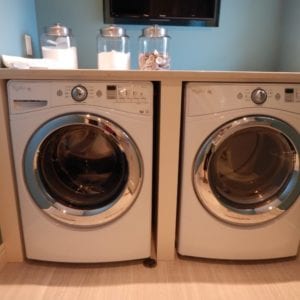5 Possible Red Flags for the Air Quality Inside Your Home
Have you ever stopped to think about just how much time you spend indoors? If you are anything like the average person, you have a roof overhead and four walls around you about 90% of the time. That means most of the air you breathe recirculates through a ventilation system — along with any airborne particles that populate it. As a homeowner, it is important to recognize what could be red flags for the air quality inside your home.
People are often surprised to learn that the air inside our homes and workplaces can be anywhere from two to five times as polluted as outdoor air. With the amount of time we spend in our homes, indoor air quality (IAQ) is as much a concern for our health as it is for comfort.
Symptoms of Poor Indoor Air Quality
Physical symptoms are often the first sign of poor indoor air quality. According to the Centre for Occupational Health and Safety, common symptoms of poor-quality air include:
- Dryness and irritations of eyes, nose, throat, skin
- Headache
- Fatigue
- Shortness of breath
- Dizziness
- Nausea
The trouble is, all of these symptoms can result from other common health conditions as well, making it difficult to diagnose indoor air quality from physical symptoms alone. You must look to other factors in the environment as well.
Red Flags for the Air Quality Inside Your Home
If you can rule out that the above symptoms are the result of other health issues, or they accompany one of the red flags below, you should investigate the air quality as the possible culprit.
1. Signs of Mould
Do certain parts of your house have that musty “wet basement” smell? That is a sure sign of mould growth. Mould contributes to poor air quality by releasing tiny spores that are small enough to breathe in, which can be harmful to your health.
2. Dust from the Air Registers
As your furnace or air conditioner draws air through its intake, it also pulls in the dust, pet dander, and other airborne particles that are present in your home. These contaminants build up in the air ducts over time. If years go by without a thorough duct cleaning, the dust will continue to circulate and pollute the air inside your home.
It is normal for ducts to be a bit dusty, but if you see dust coming out of the registers, that’s not a good sign. For duct cleaning in Toronto and the GTA, we recommend scheduling an appointment before the busy season in the summer.
3. Allergy Symptoms that Worsen at Home
Do your allergies seem to act up more at home? Physical symptoms that develop within a few hours of arriving home (and improve after you leave) could be a red flag for your air quality.
The same goes for reactions in other indoor spaces; if your symptoms flare up at work, for example, there could be problems with the air quality there.
4. Malfunctioning Furnace or Air Conditioner
Your home’s HVAC system is responsible for removing stale indoor air and replacing it with fresh, outdoor air. Problems with the heating or cooling equipment, or the ventilation system that distributes warm or cool air, is a frequent cause of poor indoor air quality. If your system is in need of repairs, it could be a red flag for the air quality inside your home.
5. Recent Renovations
Home remodelling projects can create lots of dust. They can also expose patches of mould that was growing surreptitiously behind the walls. Without proper ventilation, these airborne contaminants can spread to other parts of the home. If your symptoms of poor indoor air quality follow a recent renovation, it could be a sign of excessive dust or mould contamination.
We recommend replacing the air filter on your furnace or air conditioner after renovating. Your air ducts may also be due for cleaning. We’d be happy to visit your home for a duct cleaning in Toronto or elsewhere in the GTA.
Image: Wavebreak Media Ltd










